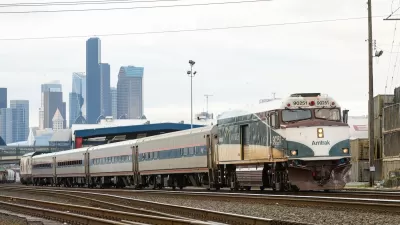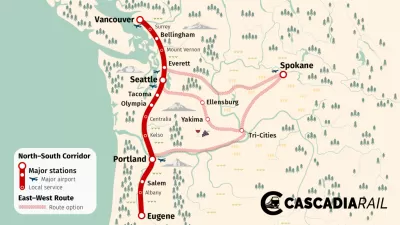Millennials are loving their center cities these days, with their lofts and bars and yoga studios. But what happens when Millennials start to have families and don't quite fit, physically or culturally, into city life anymore?

For all the effort that has gone into making cities attractive to young residents, far less effort has been spent on the question of how to keep them. This issue motivated an extended research project by urban planner and architectural designer Sarah Snider Kommpa. Kommpa recently completed a tour of 11 cities in which she tried to discern the urban-to-suburban migration patterns and to compile recommendations for how cities can remain attractive once middle-class Millennials become parents. She summarized her work in “Downtown Families: Discovering How Cities Support Urban Family Living”.
Here are excerpts from Kommpa's Q&A with Next City's Alexis Stephens:
"Upper-class families with kids can choose to live in the city regardless and there’s a breaking point there. If you can afford private school and live downtown, then you can do that and that doesn’t matter. On the other end of the spectrum, folks living in subsidized housing don’t have a lot of choice about where to send their kids to school — depending on how the local district does choice, whether it is neighborhood-based schooling or open enrollment....Certainly some families are going to say, 'I’m going to move where I know the school system is good,' but there are a lot of parents getting involved in more urban schools to change that from the bottom up. That’s one of the trends that I saw while traveling."
"From a developer’s perspective, they can get more per square foot for smaller units than they can for larger units. Unfortunately when folks go in and design their buildings, they’re using market studies that are a few years old. They’re not thinking long-term about retaining those renters when they get married and have kids."
FULL STORY: What Happens When Millennials Age Out of Micro-Lofts?

Planetizen Federal Action Tracker
A weekly monitor of how Trump’s orders and actions are impacting planners and planning in America.

Maui's Vacation Rental Debate Turns Ugly
Verbal attacks, misinformation campaigns and fistfights plague a high-stakes debate to convert thousands of vacation rentals into long-term housing.

San Francisco Suspends Traffic Calming Amidst Record Deaths
Citing “a challenging fiscal landscape,” the city will cease the program on the heels of 42 traffic deaths, including 24 pedestrians.

Defunct Pittsburgh Power Plant to Become Residential Tower
A decommissioned steam heat plant will be redeveloped into almost 100 affordable housing units.

Trump Prompts Restructuring of Transportation Research Board in “Unprecedented Overreach”
The TRB has eliminated more than half of its committees including those focused on climate, equity, and cities.

Amtrak Rolls Out New Orleans to Alabama “Mardi Gras” Train
The new service will operate morning and evening departures between Mobile and New Orleans.
Urban Design for Planners 1: Software Tools
This six-course series explores essential urban design concepts using open source software and equips planners with the tools they need to participate fully in the urban design process.
Planning for Universal Design
Learn the tools for implementing Universal Design in planning regulations.
Heyer Gruel & Associates PA
JM Goldson LLC
Custer County Colorado
City of Camden Redevelopment Agency
City of Astoria
Transportation Research & Education Center (TREC) at Portland State University
Jefferson Parish Government
Camden Redevelopment Agency
City of Claremont





























